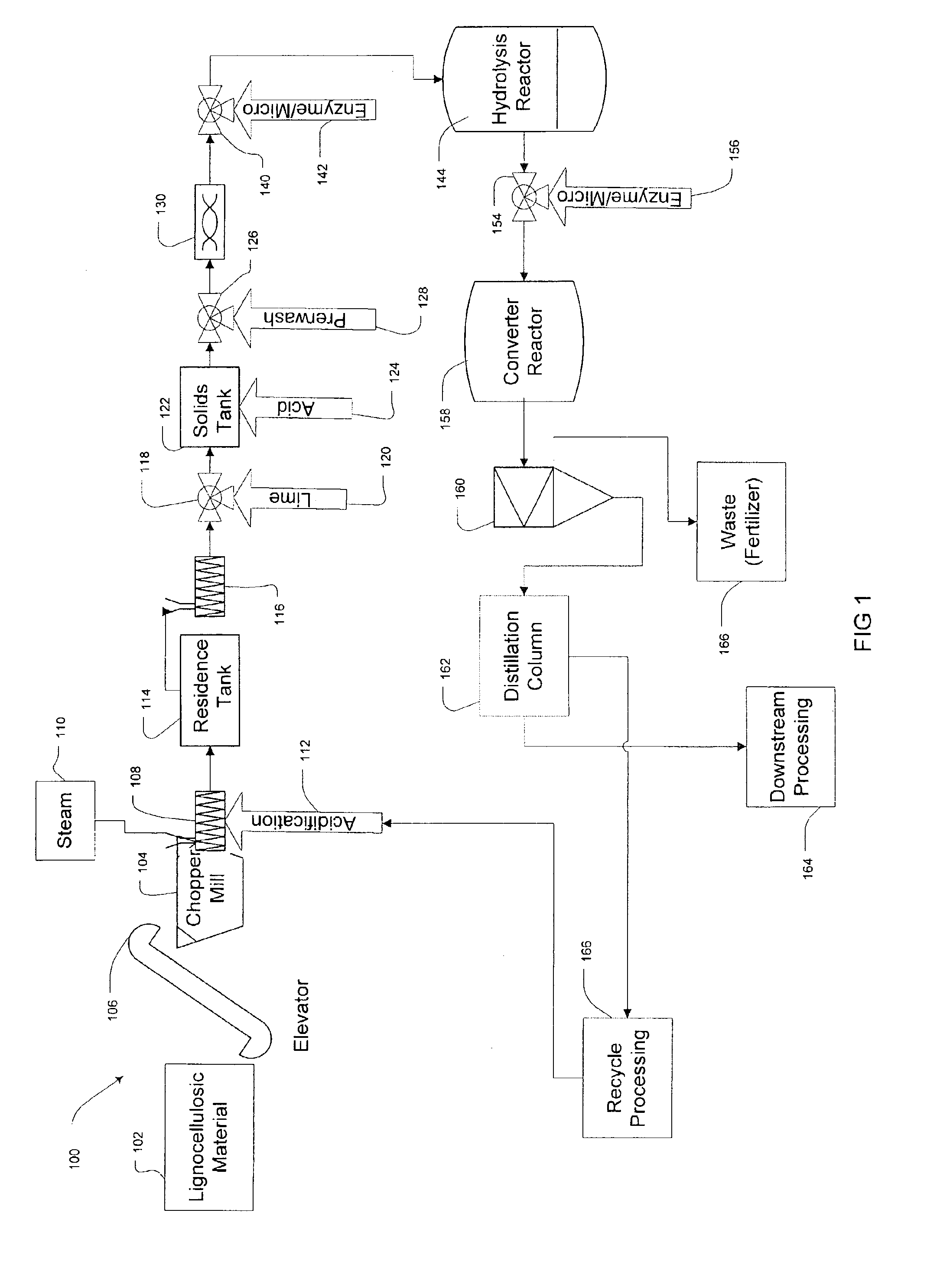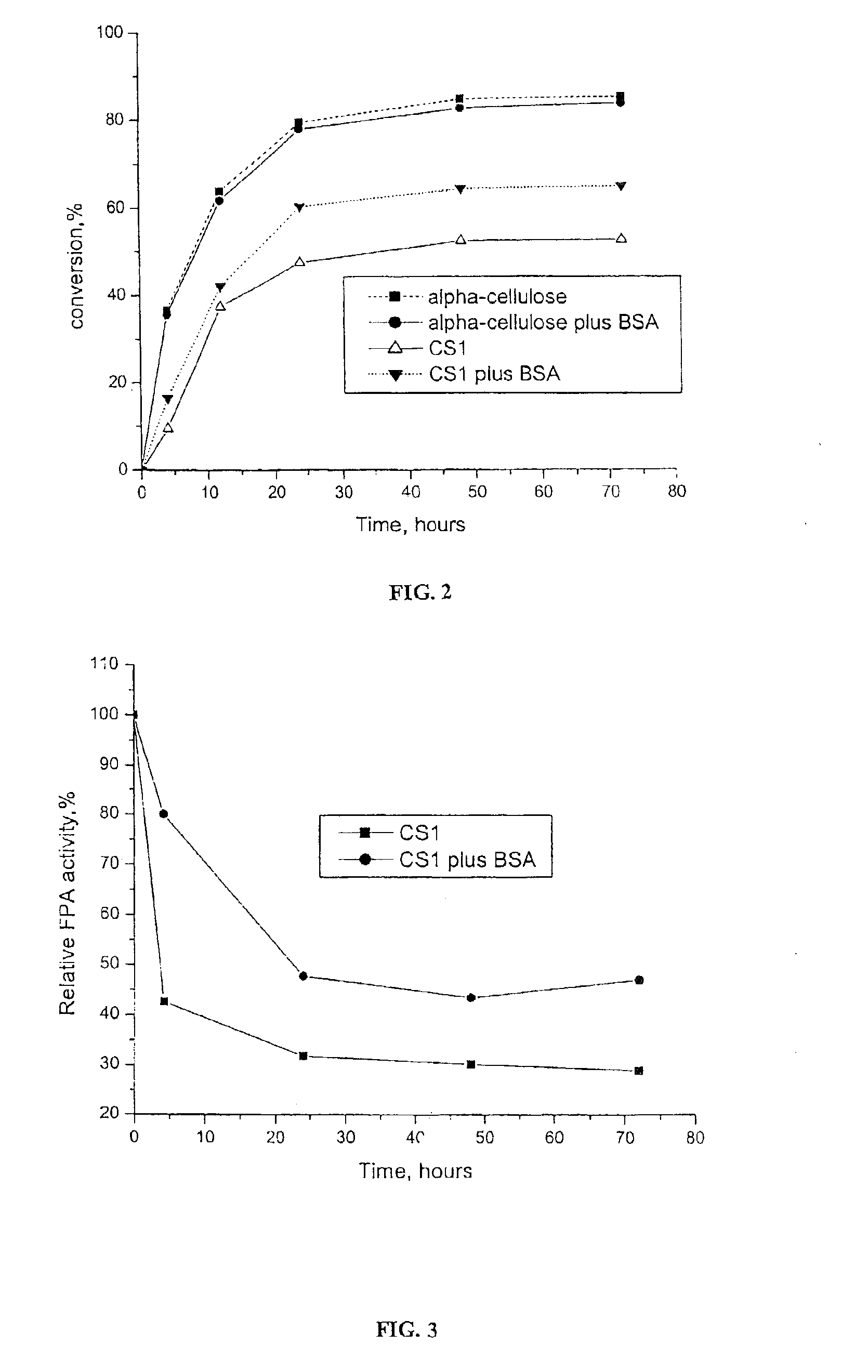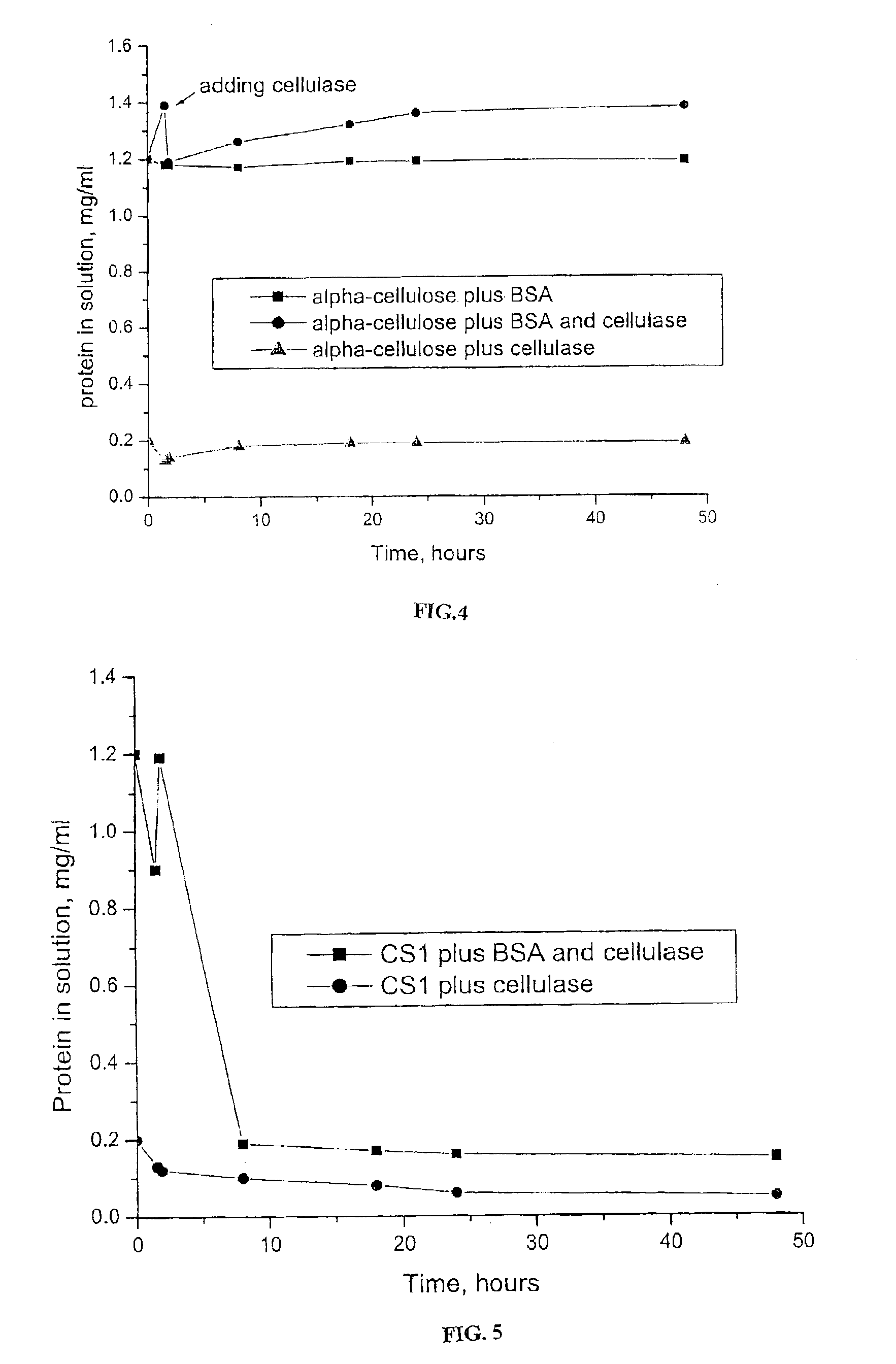Lignin-blocking treatment of biomass and uses thereof
a technology of lignin blockade and biomass, which is applied in the field of biomass processing, can solve the problem of unable to hydrolyze cellulose in the soil, and achieve the effect of reducing the number of lignin-producing cells
- Summary
- Abstract
- Description
- Claims
- Application Information
AI Technical Summary
Benefits of technology
Problems solved by technology
Method used
Image
Examples
example 1
High Lignin-lignocellulosic Biomass Treatment with a Lignin-binding Protein
[0084]The present example demonstrates the utility of using a protein treatment, such as a protein / polypeptide washing step, to enhance the efficiency of cellulase activity in a high-lignin content lignocellulosic biomass. As compared to prior methods, that attempt to degrade and remove the lignin content, the present method blocks the lignin by protein binding that prevents lignin from scavenging digestion enzymes. This example compares the protein washing methodology in the form of a wash pretreatment to prior art processing with acid hydrolysis and / or steam explosion. Results show that similar efficiencies may be obtained by using substantially less cellulase enzyme when the biomass is prewashed with a protein solution that contains lignin-binding protein.
[0085]Two examples of biomass were examined. These were a biomass made from corn stover (CS) and a biomass made from Douglas fir. For each sample, chemic...
example 2
Protein Treatment of High Lignin-containing Biomass
[0097]The present example demonstrates the utility of the inventive process for enhancing cellulose degradation and the efficiency of cellulase, or other cellulose-degrading enzymes, by inhibiting the protein binding capacity of lignin with protein / peptide having a non-specific lignin-binding affinity.
[0098]Two types of cellulose sources were studied. One type was α-cellulase—a purified cellulase without appreciable lignin. The other biomass type examined was corn stover (CS). Four samples were studied including α-cellulose without protein prewash, α-cellulose with protein prewash, CS with prewash and CS without prewash.
[0099]Each sample was washed at room temperature with 1%(w / w) BSA (aq) of an aqueous bovine serum albumin protein solution by filtering the protein solution through three passages while retaining solids on a medium glass filter at room temperature (the ratio of solid to protein solution is 1 g: 20 ml, the range of pr...
example 3
Lignin-binding Protein / Peptide
[0102]The present example is provided to demonstrate the utility of using different lignin-blocking polypeptides and / or proteins in the conversion of lignocellulosic biomass.
[0103]The lignin-blocking protein demonstrated here to result in the reduction of cellulase enzyme required to convert biomass is BSA. BSA has a relatively high molecular weight of 66,000 Daltons. It is contemplated that other polypeptides and / or proteins that have the ability to block lignin binding will also be useful in the practice of the invention. Thus, while proteins and / or polypeptides having an average molecular weight from 2,000 Daltons to 300,000 Daltons is generally useful, proteins or polypeptides having the capacity to block lignin binding, and having a molecular weight in the range of about 55,000 Daltons to about 80,000 Daltons are expected to be particularly useful in the practice of the invention. Many proteins and polypeptides having a non-specific binding affinit...
PUM
| Property | Measurement | Unit |
|---|---|---|
| molecular weight | aaaaa | aaaaa |
| molecular weight | aaaaa | aaaaa |
| molecular weight | aaaaa | aaaaa |
Abstract
Description
Claims
Application Information
 Login to View More
Login to View More - R&D
- Intellectual Property
- Life Sciences
- Materials
- Tech Scout
- Unparalleled Data Quality
- Higher Quality Content
- 60% Fewer Hallucinations
Browse by: Latest US Patents, China's latest patents, Technical Efficacy Thesaurus, Application Domain, Technology Topic, Popular Technical Reports.
© 2025 PatSnap. All rights reserved.Legal|Privacy policy|Modern Slavery Act Transparency Statement|Sitemap|About US| Contact US: help@patsnap.com



